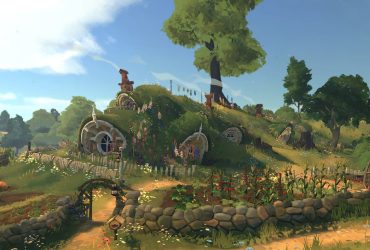Key Takeaways
- Final Fantasy 17 may need to find a middle ground in world design between FF15’s open world and FF16’s hub structure
- Learning from FF15 and FF16 can help FF17 create the best world possible for player enjoyment.
- Final Fantasy 17 could aim to replicate FF7 Rebirth’s open-world zones with meaningful content to improve the player experience.
Final Fantasy 17 hasn’t been officially announced, but there’s little doubt it’s coming. However, with how starkly different the last two mainline installments are, it’s difficult to tell where Final Fantasy 17 might end up in terms of its approach to world design. With Final Fantasy 15 being fully open world and Final Fantasy 16 being split up into smaller hubs, Final Fantasy 17 may need to find a middle ground somewhere.
Whether Final Fantasy 17 should be open world or not is a purely subjective take, but there are things it can learn from Final Fantasy 15 and Final Fantasy 16 to ensure its world is the best it can be. Final Fantasy 17 taking notes about what worked and what didn’t in each of those installments is key, as it will contribute to its reception in the end.

Related
Final Fantasy 17 Still Has a 24-Year-Old High Bar to Clear
When the next mainline Final Fantasy game is ready to release, it will need to cross a bar that a particular entry set 24 years ago.
Final Fantasy 17’s Map Design Should Land Somewhere Between FF15 and FF16
Final Fantasy 15 Features a Massive Open World for Players to Explore
Final Fantasy 15 was the first Final Fantasy game to incorporate a true open-world design, which automatically nominated it for a divisive reception, as these things go. On the positive side, Final Fantasy 15 features one of the series’ most visually captivating worlds to date, and its sheer scale makes it a wonder to behold. Couple that with traveling around Lucis in the iconic Regalia alongside Noctis’ faithful companions, and its road-trip vibes make for an incredibly fresh Final Fantasy experience. Unfortunately, its open world wasn’t all that well-received, as it succumbed to many of the same issues that plague other open-world games.
Like many open-world games today, Final Fantasy 15‘s approach to world design leaves its optional activities feeling repetitive and shallow, ultimately netting it all the dreaded “filler content” label. Large portions of Final Fantasy 15‘s open world also feel underused, as there are far too many regions that lack notable landmarks or other surprises that might have made those areas seem more intentional. To be fair, these aren’t new roadblocks in the open-world genre, but they still put a damper on things in Final Fantasy 15.
As such,
Final Fantasy 17
may want to avoid going fully open world.
Final Fantasy 16 Features a Smaller, Hub-Based World Structure
Final Fantasy 16 didn’t do a sharp U-turn away from Final Fantasy 15‘s world design, but it did leave the open-world approach behind. Instead of a true open world, Final Fantasy 16 features a more manageable, hub-based structure that allows for a greater focus on storytelling. Specifically, Final Fantasy 16 is split up into several large expansive regions, each of which has plenty of exploration potential and room for activities but is still self-contained.
Final Fantasy 15
was the first
Final Fantasy
game to incorporate a true open-world design, which automatically nominated it for a divisive reception, as these things go.
Ironically, Final Fantasy 16‘s approach to world design makes it feel insignificant compared to its predecessor, almost as if it might have been better as an open-world game. The hub structure of Final Fantasy 16‘s world limits players’ ability to get immersed in its rich lore, and the linear structure of certain zones tends to make it feel a little too much like a guided tour of Valisthea’s various landscapes. Considering that, perhaps Final Fantasy 17 might actually be better off exploring a more opened-up version of Final Fantasy 16‘s world.
Final Fantasy 17’s Map Could Be Closer to Final Fantasy 7 Rebirth’s
It may not be wise for Final Fantasy 17 to go fully open world like Final Fantasy 15, but it could also do much more than Final Fantasy 16 accomplished. In light of that, Final Fantasy 17 might find better footing somewhere in the middle. As it turns out, Final Fantasy 7 Rebirth‘s is closer to the middle of these two approaches, as it features sizable open-world zones as opposed to being fully open world or being split up into smaller hubs. On the positive side, Final Fantasy 7 Rebirth‘s open-world zones benefit from the nostalgia of longtime fans of the original Final Fantasy 7, while also featuring gorgeous environments that are tough to ignore.
Unfortunately, Final Fantasy 7 Rebirth‘s open-world zones also fall prey to common open-world roadblocks like emptiness, repetitiveness, and lifelessness. It’s not impossible, however, for Final Fantasy 17 to take this approach and shine where Final Fantasy 7 Rebirth fell short. Filling its world with meaningful and diverse side content, as well as distinctive environments would be a great place to start. This would not only put its map in the sweet spot between Final Fantasy 15 and Final Fantasy 16, but it would also improve upon what Final Fantasy 7 Rebirth started.














Leave a Reply